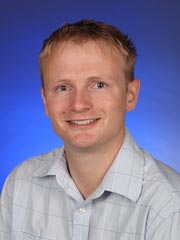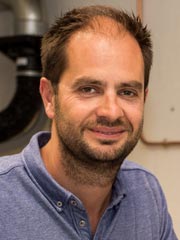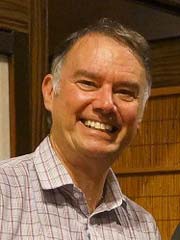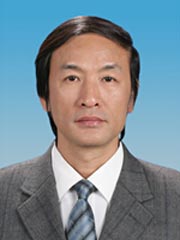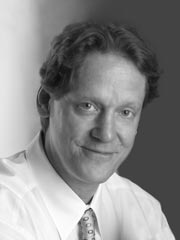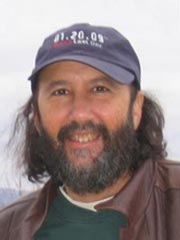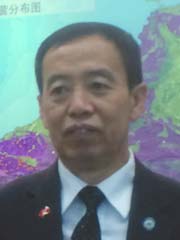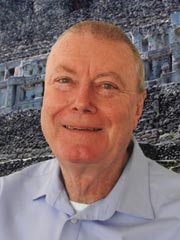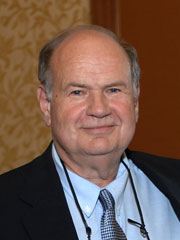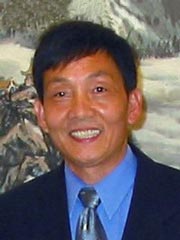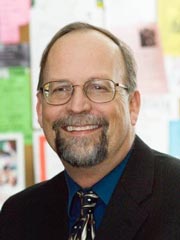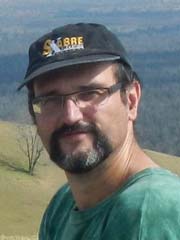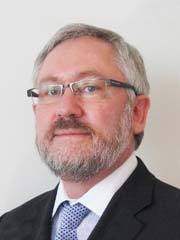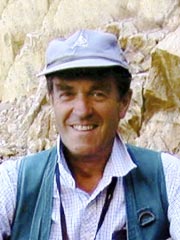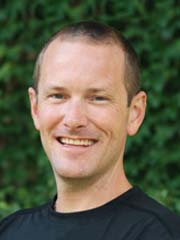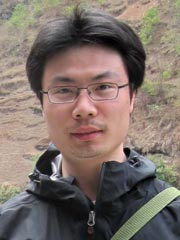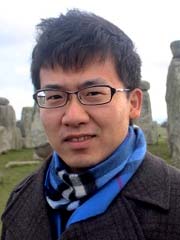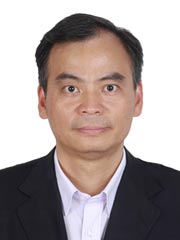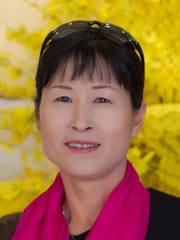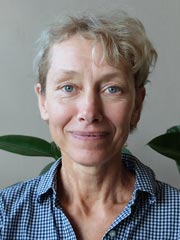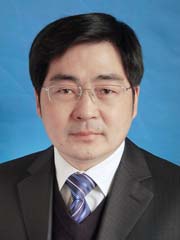|
|
Shaun Barker Shaun obtained his Ph.D. from the Australian National University in 2007 and then worked as a research fellow at the Mineral Deposit Research Unit for five years. Shaun specializes in analytical geochemistry and the use of geochemical tools to trace fluid pathways in hydrothermal systems. In 2013, Shaun received the Waldemar Lindgren Award from the SEG for his work on Carlin-type gold deposits. Currently, Shaun is a senior lecturer at the University of Waikato in New Zealand, where he works on a variety of government and industry-supported research projects. |
|
|
|
|
|
Bernard Charlier Bernard leads the Laboratory for Experimental Petrology at the University of Liege, Belgium. His research focus is on magmatic processes responsible for the chemical differentiation of the Earth and other terrestrial planets and the formation of ore deposits. He combines field relationships, petrography, mineralogy, geochemistry, and experimental petrology to understand the origin and evolution of basaltic to rhyolitic magmas, their crystallization products, and associated mineralization. Some current projects are devoted to the role of liquid immiscibility in magmas and to Fe-Ti-P-V ores in layered intrusions, anorthosite complexes, and Kiruna-type systems. |
|
|
|
|
|
David Cooke David, together with his students and colleagues, has been researching porphyry and epithermal deposits of the circum-Pacific region for almost 30 years. They have investigated the geodynamic environments of mineralization, intrusive history, and the magmatic-hydrothermal transition, fluid compositions, ore-forming processes, and genetic associations between porphyry and epithermal systems. David and his team have been studying geochemical halos to porphyry and epithermal deposits, developing new exploration tools for the minerals industry. David is an associate editor of Economic Geology, director of the TMVC Industrial Transformation Research Hub, and director of the Centre of Ore Deposits and Exploration Science (CODES). David was the SEG Thayer Lindsley Lecturer in 2005 and was awarded the SEG Silver Medal in 2013. |
|
|
|
|
|
Stephen Cox Stephen is a professor of structural geology at the Research School of Earth Sciences at the Australian National University. His research interests are primarily in the coupling between deformation processes and fluid flow in crustal regimes, with applications to ore genesis and crustal mechanics. His research is pursued via field-based studies, microstructural, microchemical, and stable isotope analyses, high-pressure, high-temperature rock deformation experiments, and numerical modeling. He holds a B.Sc. (Hons) degree from the University of Tasmania and a Ph.D. degree from Monash University. |
|
|
|
|
|
Jun Deng Jun is university president and professor of economic geology at China University of Geosciences, Beijing (CUGB). He earned his M.Sc. degree from China University of Geosciences, Wuhan, and did his Ph.D. work in structural geology at the Chinese Academy of Geological Sciences, focusing on structural mechanism in the Northwest Jiaodong region and its controlling functions on distribution of gold mines. He did his postdoctoral work at CUGB and served in a number of positions there, including deputy director of the economic geology department, dean of faculty and students, and vice president, before becoming president in September 2010. |
|
|
|
|
|
Robert Friedland Robert is the founder of Ivanhoe Mines Ltd. (now Turquoise Hill Resources Ltd.), a Canadian mining company focused on advancing its principal mine development projects in southern Africa. Robert was president of the company from June 2003 to May 2008 and has been the executive chairman and director since November 2000. He directed the assembly of a portfolio of interests in several countries over 15 years and led the company's discoveries and initial development of the Oyu Tolgoi copper-gold-silver deposits in southern Mongolia. |
|
|
|
|
|
Richard Goldfarb Rich is a research professor at Colorado School of Mines and China University of Geosciences Beijing, as well as a private consultant, subsequent to retiring as a senior research geologist after 36 years with the U.S. Geological Survey's Mineral Resources Program. His interests and expertise include the geology and geochemistry of gold deposits in metamorphic rocks, as well as the tectonic controls of ore deposits and regional metallogeny of Asia. Rich has served as chief editor of Mineralium Deposita, as a member of the editorial board of Economic Geology, and as a past president of SEG. He is a recipient of the SEG Silver Medal and Ralph W. Marsden Award, as well as the IAGOD Kutina-Smirnov Medal. Presently, Rich serves as chair of the SEG Publications Board and of the SEG 2017 Conference to be held in Beijing. |
|
|
|
|
|
Nikolay Goryachev Nikolay completed his Ph.D. thesis in 1985 at Moscow State University and his Doctor of Science thesis in 2000. Since 1985, he has been working at the NEISRI FEB RAS, Magadan, and currently occupies the position of fellow scientist. He is professor of the geological department of North-East State University in Magadan. His principal experience is in geology and tectonic settings of gold lode deposits and metallogeny of gold. Publications include more than 250 papers in Russian and international journals and monographs. His field experience is related to research in Far East Russia, Altay, Ural, and Transbaikalia, as well as in Alaska (USA), Yukon (Canada), Finland, Mongolia, China, and Australia. He was coleader for the long-term international project, "Tectonics and Metallogenesis of the Russian Far East, Alaska, and Western Canada." He was also SEG Regional Vice President Lecturer in 2007 and SEG Regional Vice President for Northern Eurasia from 2009 to 2012. |
|
|
|
|
|
Christoph A. Heinrich Chris turned from metamorphic petrologist to economic geologist while working in Australia (Comalco, CSIRO, Geoscience Australia), before his appointment as a professor of mineral resources at ETH Zurich in 1994. He has since built a teaching and research group in Switzerland, investigating processes of hydrothermal ore formation through a combination of field geology and the development of quantitative analysis of fluid inclusions, high-precision geochronology, and numerical modeling of the chemistry and physics of fluid-rock interaction (www.geopetro.ethz.ch/research/orefluids). Chris served as associate editor for Economic Geology, and in 2006 he was awarded the SEG Silver Medal. |
|
|
|
|
|
Baohong Hou Baohong received his B.Sc. in 1982 and his M.Sc. in 1985 from Jilin University (formerly Changchun University of Earth Sciences) in China. He went on to complete his Ph.D. at the University of Adelaide, Australia, in 1994. He is a senior principal geoscientist at the Geological Survey of South Australia and an adjunct professor at Jilin University. His research interests span a range of topics within ore deposit geology. He has more than 30 years of university, industry, and government experience across China and Australia in geoscience mapping and economic geology and in leading collaborative geoscience programs. |
|
|
|
|
|
Douglas Kirwin Doug is an Australian geologist with 45 years of international experience. His exploration teams have been responsible for several well-known mineral discoveries which are now being mined, the most notable being the giant Oyu Tolgoi gold copper deposit in Mongolia developed by Rio Tinto. He was executive vice president of Ivanhoe Mines from 1996 to 2012 and is currently an independent consulting geologist based in Thailand. Doug has an M.Sc. in mineral exploration from James Cook University, where he is currently an adjunct professor of geology. |
|
|
|
|
|
David Leach David received his B.S. degree at Virginia Polytechnic Institute and his M.S. and Ph.D. (1973) degrees from the University of Missouri. He worked for the Lawrence Livermore National Laboratory for five years as a project scientist on uranium geochemistry, hydrothermal alteration experiments on porphyry ores, and exploration geochemistry. He joined the U.S. Geological Survey in 1978, where he worked for more than 34 years. He is currently a research professor at the Colorado School of Mines, guest professor at China University of Geosciences (Beijing) (CUGB), and consultant to the minerals industry. He has authored or coauthored more than 200 papers on the geology and geochemistry of ore deposits and is a recognized expert on sediment-hosted base metal deposits. His career focused on hydrothermal mineral-rock interactions with special interest in Mississippi Valley-type and clastic-dominated (SEDEX) Pb-Zn deposits, ore formation in metamorphic environments, global metallogeny, and deposit targeting using global geodynamics and secular distribution of ore deposits. |
|
|
|
|
|
Chusi Li Chusi is the SEG 2017 International Exchange Lecturer. He received his Ph.D. in geology from the University of Toronto, Canada, in 1993. He has been a faculty member at Indiana University, Bloomington, Indiana, since 1999, and a guest professor at several universities and research institutions in China since 2004. Chusi's research, teaching, and consultancy to the mineral exploration industry in the last three decades have mainly focused on the geology, genesis, and exploration of magmatic sulfide deposits worldwide. He has coedited two books and coauthored more than 140 refereed articles published in top-tier international geologic journals, including Economic Geology. |
|
|
|
|
|
Jian-Wei Li Jian-Wei is currently a professor in economic geology at China University of Geosciences in Wuhan, where he has 20 years of experience in teaching and research in economic geology. He received his Ph.D. in 1998 through working on granite-related uranium deposits in South China. His major research interests and expertise focus on geology, geochemistry, and geochronology applied to understanding the distribution and genesis of ore deposits, mostly from orogenic gold, Carlin-like gold, skarn Cu-Fe, and supergene Mn systems on a local to regional scale. His second interest is regional magmatic and tectonic controls on ore formation, in particular in orogenic belts and tectonically reactivated cratonic margins. |
|
|
|
|
|
Lawrence Meinert Larry is deputy associate director of energy and mineral resources at the U.S. Geological Survey, where he is responsible for leading the research, assessment, and information-gathering functions of more than 300 scientists. Previously, he served as an AAAS Congressional Fellow in the U.S. Senate and House of Representatives, staffing the Senate Energy and Natural Resource Committee and the House Science, Space, and Technology Committee. Prior to that he had a successful academic career spanning three different universities, where he managed research laboratories and advised dozens of postdoctoral scientists and Ph.D., M.S., and B.S. students engaged in cutting-edge mineral resource research, funded by NSF and private industry. He has worked as a consultant for major mining companies in more than 50 countries. He has an active research program with more than 200 peer-reviewed publications and is chief editor of Economic Geology. He earned a Ph.D. degree in geology from Stanford University and a B.A. from Carleton College. In his spare time he operates a small home winery, specializing in a barrel-fermented Bordeaux blend of Cabernet Sauvignon, Carmenere, and Malbec, and runs marathons. |
|
|
|
|
|
Peter Pollard Peter is a Brisbane-based consulting economic geologist with over 25 years of experience in project generation, exploration, and evaluation, principally in copper, gold, tin-tungsten, and rare metal deposits worldwide. He holds B.Sc. (Hons) and Ph.D. degrees in geology from James Cook University, Australia, and is a member of the Australasian Institute of Mining and Metallurgy (chartered professional) and a fellow of the SEG. Peter has worked extensively on some of the world’s major porphyry copper-gold deposits, including those in the Ertsberg and Ok Tedi districts (New Guinea), Escondida Norte (Chile), Oyu Tolgoi (Mongolia), and Ak Sug (Russia). He has also worked on porphyry exploration programs in Mongolia, Iran, Indonesia, Kazakhstan, and Mexico. |
|
|
|
|
|
David Rhys David is a consulting geologist based in Vancouver, Canada. He studied at the University of British Columbia and subsequently has worked for nearly 25 years in the mining industry, applying geologic studies with a structural focus to exploration, development, and mining. David has extensive experience in gold and base metal deposits, with a focus on advanced projects and active mining operations, contributing to the interpretation of mine site ore controls, applications of mine geology to local- and district-scale exploration activities, and the training of geologic teams. |
|
|
|
|
|
Richard Schodde Richard is the managing director of MinEx Consulting, which provides strategic advice to industry and government on mineral exploration. Prior to this, Richard worked in business development and exploration for BHP Billiton and WMC Resources. He has published several dozen papers on exploration performance and is internationally recognized by his peers as a world leader in mineral economics. Richard is a member of the SEG. He is also on the editorial board of the Journal of Resources Policy and the organizing committees for the AusIMM and the Melbourne Mining Club, and he is an adjunct professor at the Centre for Exploration Targeting at UWA. |
|
|
|
|
|
Richard Sillitoe Richard is a consulting geologist with internationally recognized expertise in the field of Au and Cu exploration. After a start with the UK Ministry of Overseas Development, studying supergene enrichment of Cu deposits in Chile, he worked for the Instituto de Investigaciones Geológicas on porphyry Cu deposits before becoming an independent consultant in 1971. He is the recipient of awards worldwide. The SEG has named him Thayer Lindsley Visiting Lecturer (1988) and International Exchange Lecturer (2014) and has honored him with the Waldemar Lindgren Award (1975), Silver Medal (2002), and Penrose Gold Medal (2015) for early, mid-, and full-career achievements, respectively. He also has served the SEG as President (1999). The 2012 Rio Tinto-sponsored SEG volume on Cu deposits (2012) is a tribute to his work. |
|
|
|
|
|
Adam Simon Adam is a professor of economic geology at the University of Michigan. Adam earned a B.S. in geology from the University of Maryland, an M.S. in geology from Stony Brook University, and a Ph.D. in geology from the University of Maryland in 2003, followed by two years as a postdoctoral fellow at Johns Hopkins University. Adam spent seven years as a faculty member of the University of Nevada, Las Vegas, and in 2012 joined the faculty of the University of Michigan. Adam's research program combines field and experimental methods to understand the formation of porphyry, iron oxide copper-gold, and iron oxide-apatite deposits. Adam coauthored the second edition of the textbook Mineral Resources, Economics and the Environment. |
|
|
|
|
|
Jia Sun Jia is currently working as a postdoctoral fellow at the Institute of Mineral Resources, Chinese Academy of Geological Sciences. He obtained his Ph.D. from China University of Geosciences (Beijing), China, in 2015. Jia's research activities include studies of porphyry, epithermal, and skarn Cu-Au deposits in the Tibet Autonomous Region and Yunnan Province, China. |
|
|
|
|
|
Christina Wang Christina has been working on geochemistry of mafic-ultramafic intrusions and associated Ni-Cu-PGE sulfide deposits and Fe-Ti-V oxide deposits after earning a Ph.D. in geochemistry from the University of Hong Kong. She joined the Guangzhou Institute of Geochemistry, Chinese Academy of Sciences (CAS) in 2008 after one year of postdoctoral experience at the School of Earth Sciences, Australian National University. She is the director of the CAS Key Laboratory of Mineralogy and Metallogeny. Her current research projects include the origin of magmatic Ni-Cu-PGE sulfide deposits and Fe-Ti-V oxide deposits in the Emeishan large igneous province in southwest China, the Tarim large igneous province in northwest China, and the central Asian orogenic belt in North China. |
|
|
|
|
|
Mingqian Wu Mingqian received a B.Sc. in geology from China University of Geosciences (Beijing) (CUGB) in 2012, and a Ph.D. degree from the same university in July 2017. From 2014 to 2016, he was funded by the China Scholarship Council as a two-year joint Ph.D. program participant at the University of Windsor, Canada. He will start his postdoctoral research this year with a main interest in understanding the genesis of rare-metal deposits, the hydrothermal geochemistry of strategic elements, and the chemistry of rare element minerals. Deposits that will be investigated include pegmatite-, granite-hosted REE-Nb-Ta-Zr-W and vein-hosted W-Sn deposits. |
|
|
|
|
|
Wenjiao Xiao Wenjiao is a geologist with interest in the evolution of the orogenic belts. He is currently vice director and professor of the Xinjiang Institute of Ecology and Geography, Chinese Academy of Sciences (CAS), and professor of tectonics at the Institute of Geology and Geophysics, CAS. He got his Ph.D. from the Institute of Geology, CAS, in 1995, and did his postdoctoral research at the Institute of Geophysics, CAS, from 1995 through 1997. He has published approximately 300 scientific papers in both domestic and international journals. He is now a Geological Society of America (GSA) fellow, and is or was associate editor or on the editorial boards of Geological Society of America Bulletin, Journal of the Geological Society, Episodes, International Journal of Earth Sciences, Journal of Asian Earth Sciences, Gondwana Research, and Terra Nova. He got the Second Award of the National Natural Science Award of China (2012), the First Award of Science and Technology Award of Xinjiang Uyghur Autonomous Region, China (2012), and the Huang Jiqing Award of the Geological Society of China (2010). Wenjiao was co-chief of IGCP 592. |
|
|
|
|
|
Yuling Xie Yuling is currently a professor and team leader of the Economic Geology Group at the University of Science and Technology Beijing (USTB), China. She completed her B.Sc. at the China University of Geosciences (Wuhan) in 1985 and her Ph.D at the China University of Geosciences (Beijing) in 1999. Yuling was a visiting professor at the ARC Centre of Excellence in Ore Deposits (CODES), University of Tasmania, Australia, during 2008 to 2009. As a research geologist, her interests include ore microscopy, fluid and melt inclusions, metallogeny, and deposit evaluation. She has worked on carbonatite-related REE, gold, porphyry Cu-Mo, and epithermal Pb-Zn-Ag mineralization in the Tibeten, Sichuan, Anhui, Inner Mongolian, and Zhejiang provinces of China. |
|
|
|
|
|
Zhiming Yang Zhiming is a research professor at the Institute of Geology of the Chinese Academy of Geological Sciences (CAGS). His research interests mainly focus on porphyry Cu deposits, particularly those in postcollisional settings of the Tethyan belt. Zhiming has been conducting a variety of research projects on porphyry Cu deposits. He is now leading a major project investigating the deep structure and ore-forming processes of the most economically significant porphyry Cu deposits in Tibet. Zhiming is currently deputy director of the Energy and Resources Research Center, Institute of Geology, CAGS, and the secretary general of the Youth Working Committee, Geological Society of China. He is also a member (Publications Chair) of the Organizing Committee for the SEG 2017 Conference in Beijing, China. |
|
|
|
|
|
Marina Yudovskaya Marina is a researcher at the Institute of Geology of Ore Deposits, Mineralogy, Petrography and Geochemistry, Russian Academy of Science in Moscow, Russia. She is a graduate of Lomonosov Moscow State University and holds a Ph.D. in geology of ore deposits from the same university. Her earlier research interests focused on orogenic gold deposits in black shales, metal transport in volcanic fluids, and nontraditional PGE sources. Since 2007, Marina has been involved in various projects on the Bushveld Complex as a postdoc and has been a visiting researcher at the University of Witwatersrand, Johannesburg, South Africa. |
|
|
|
|
|
Taofa Zhou Taofa is a professor of mineral deposits at Hefei University of Technology, China, where he earned his Ph.D., and is the director of the Center of Engineering and Technology in Ore Deposits and Mining Environment of Anhui Province, China. Taofa specializes in the characteristics and origins of skarn Cu, Fe, and porphyry Cu-Au deposits, hydrothermal ore-forming systems, and granitoids and their relation to mineralization. He works on a variety of deposits formed in different hydrothermal environments in the middle-lower Yangtze metallogenic belt as well as in South China and the mineral systems in Xinjiang of west China. Taofa currently is an SEG Fellow, an editor or board member of five Chinese geologic journals, and associate editor of Ore Geology Reviews. |
|
|
|
